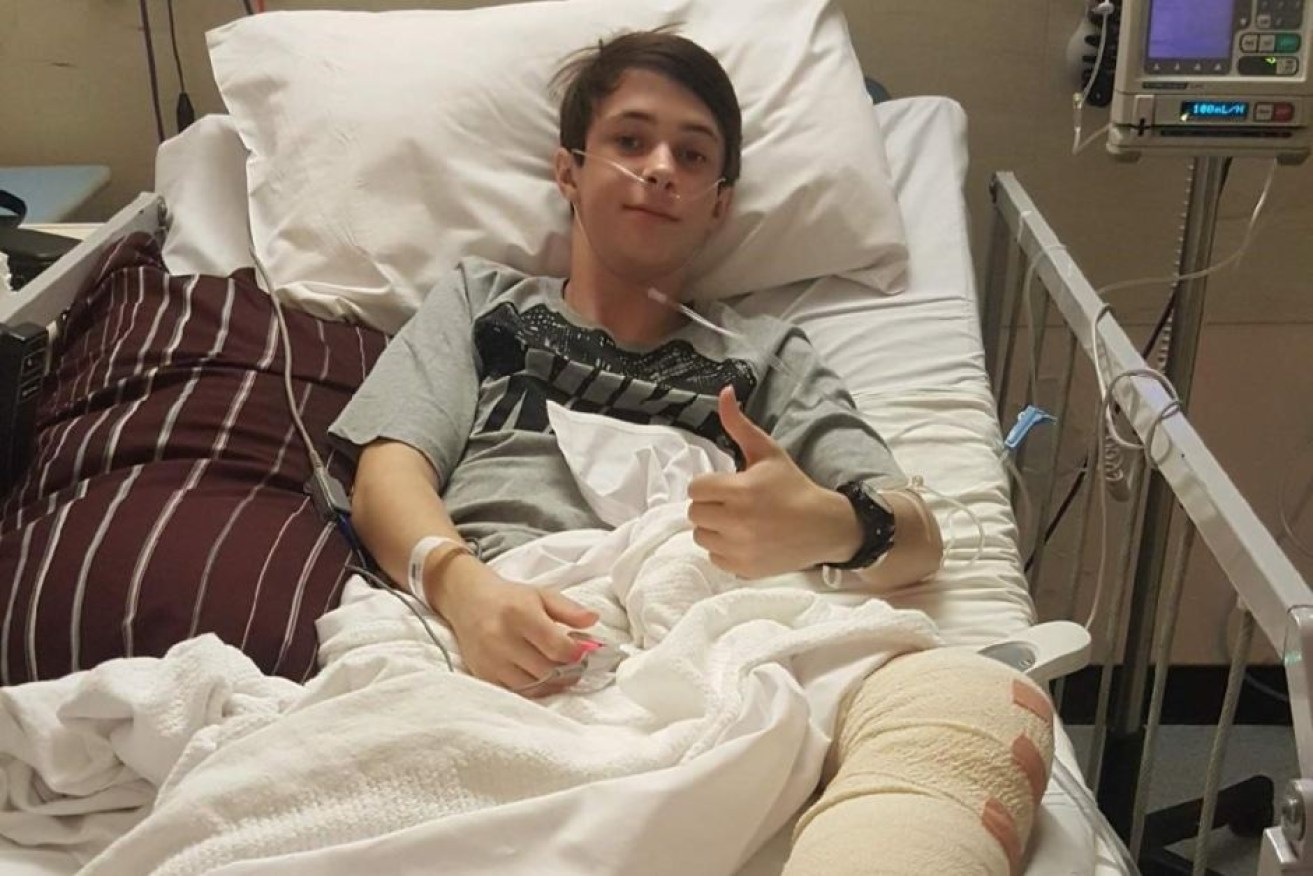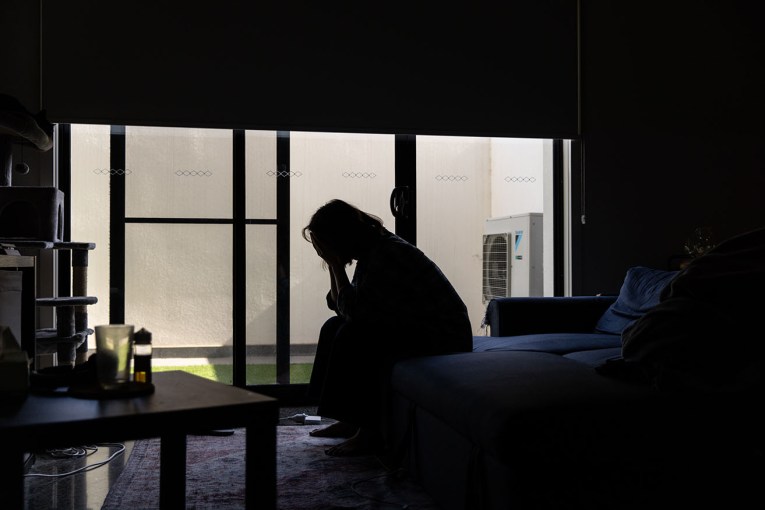Indoor trampoline centres land almost 500 kids in emergency departments over five years

Teenager Adam Bart spent four months recovering after breaking his leg at a trampoline centre. Photo: Supplied/ABC
Australian kids are increasingly being left with serious injuries including spinal cord damage, fractures and sprains, as a result of playing at indoor trampoline centres.
New figures from the University of Sydney revealed almost 500 children and teens ended up in hospital emergency departments across three states from 2012 to 2017.
Lead author Dr Lisa Sharwood said attendance at indoor trampoline parks had soared — and so had the number of injuries.
“Some of these incidents have caused permanent and lifelong disability, resulting in legal action … but any changes we can make in the future will be too late for many children and teenagers whose lives will never be the same,” she said.
The most common injuries were fractures and sprains, but almost 20 per cent had serious spinal cord and head injuries.
Most serious injuries occurred in foam pits with children landing awkwardly, attempting to perform a somersault or when more than one person was on the trampoline.
‘Like what you would see in a car crash’
Adam Bart, 16, was with his family at a trampoline centre when he broke his leg in two places.
His mother Simonne Bax said Adam was attempting a trick when he fell awkwardly.
“He’d actually gone through the skin with his bones,” she said. “Blood started to pool out. He started to get the shakes.
“I could hear him screaming the whole way from the waiting area.”
It took two paramedic crews and a cocktail of strong painkillers to get Adam into an ambulance.
Emergency surgery resulted in a steel rod and four screws in his leg. He spent the next four months recovering.
Complications from the surgery affected his liver and he will need the rod in his leg replaced as he gets older.
“The doctors said that because of the velocity, it’s like what you would see in a car crash,” Ms Bax said.
Besides the horrific injury, Ms Bax said she was also hit with big medical bills. Due to a waiver visitors sign when entering the centre, she had no legal recourse.
“I found the whole ordeal horrendous,” she said.

Adam broke the tibia and fibula bones in his leg. Photo: Supplied/ABC
Ms Bax thinks the trampoline centres should have a proper video safety induction, not just a cursory waiver.
“You think you’re signing into a play area that you think is already safe,” she said. “Those things are apparatus usually used by trained professionals.
“My son didn’t realise if he did a trick from the wall his leg could break from the velocity. If there’s a danger it should be written there on the wall.”
Adam said he just remembered a, “hot stinging sensation” from the break.
“I just saw my leg flop from side to side,” he said.
Stricter safety standards needed: experts
Child-safety experts said compulsory regulation of indoor trampoline parks was urgently needed to stop more kids being seriously injured.
“I believe a mandatory standard is the safest way to proceed so the public can have confidence that they are going to have that fun experience in the safest environment possible,” Dr Sharwood said.
Currently, there are no mandatory safety standards for the booming industry in Australia.
While a draft standard has been prepared by Standards Australia, it’s only voluntary, and experts said that wasn’t good enough to protect children.
“Where a standard is voluntary, the pressure on manufacturers and industry isn’t strong enough to prevent injuries at indoor trampoline parks,” Dr Sharwood said.
The Australian Trampoline Park Association has a code of practice that includes safety, but only about 20 per cent of Australian trampoline parks are members of the association.
Parks have to undergo a yearly independent audit to ensure trampolines and foam pits are safe.
A spokesman said the group met regularly to discuss ways in which all parks could reduce risk of injuries.
The new research looked at injuries to children and young people in Queensland, Victoria and Western Australia, and added to data from Neuroscience Research Australia, which found in just six months of 2014, 40 children were taken to hospitals in NSW with injuries from indoor trampoline parks.
-ABC








